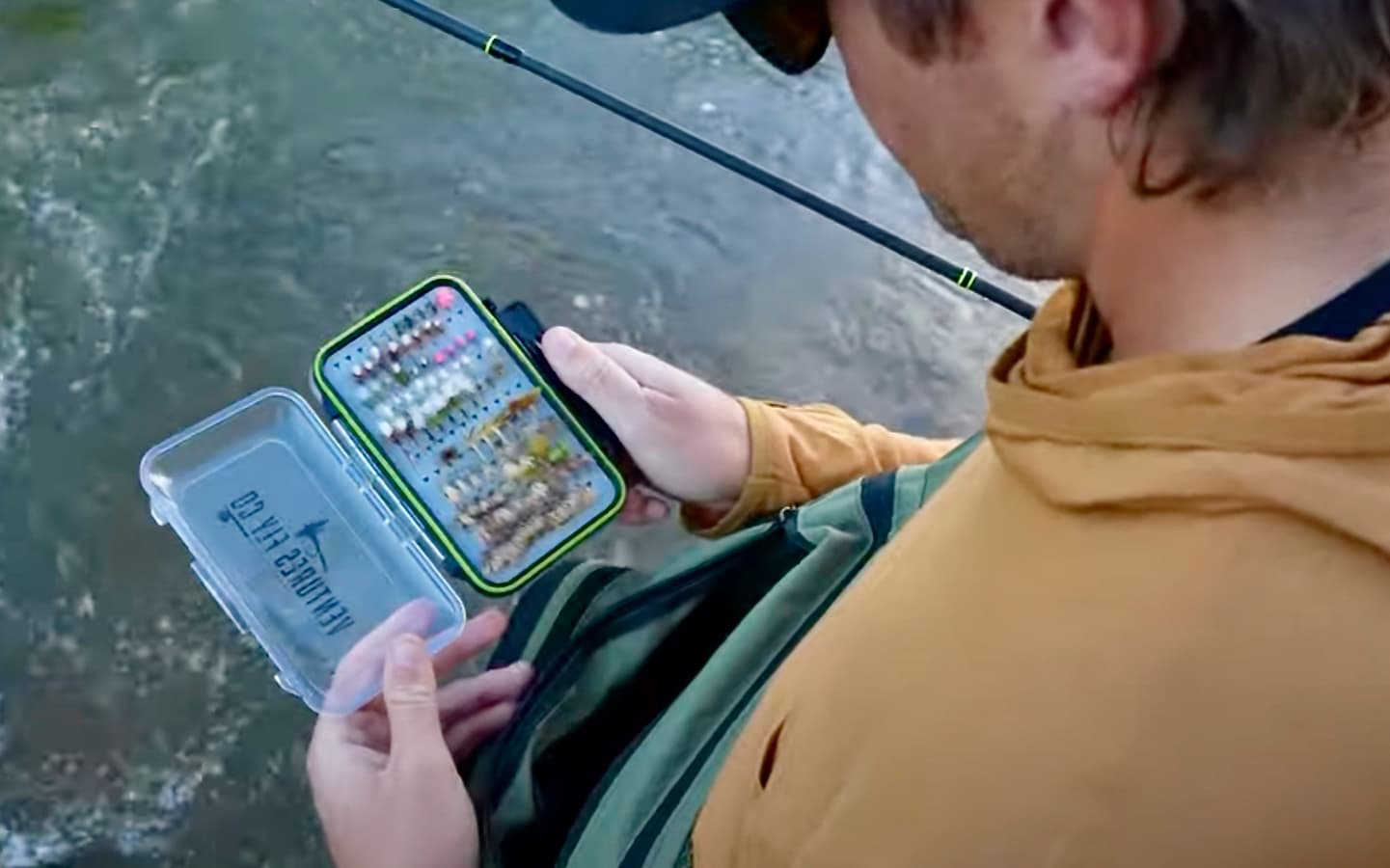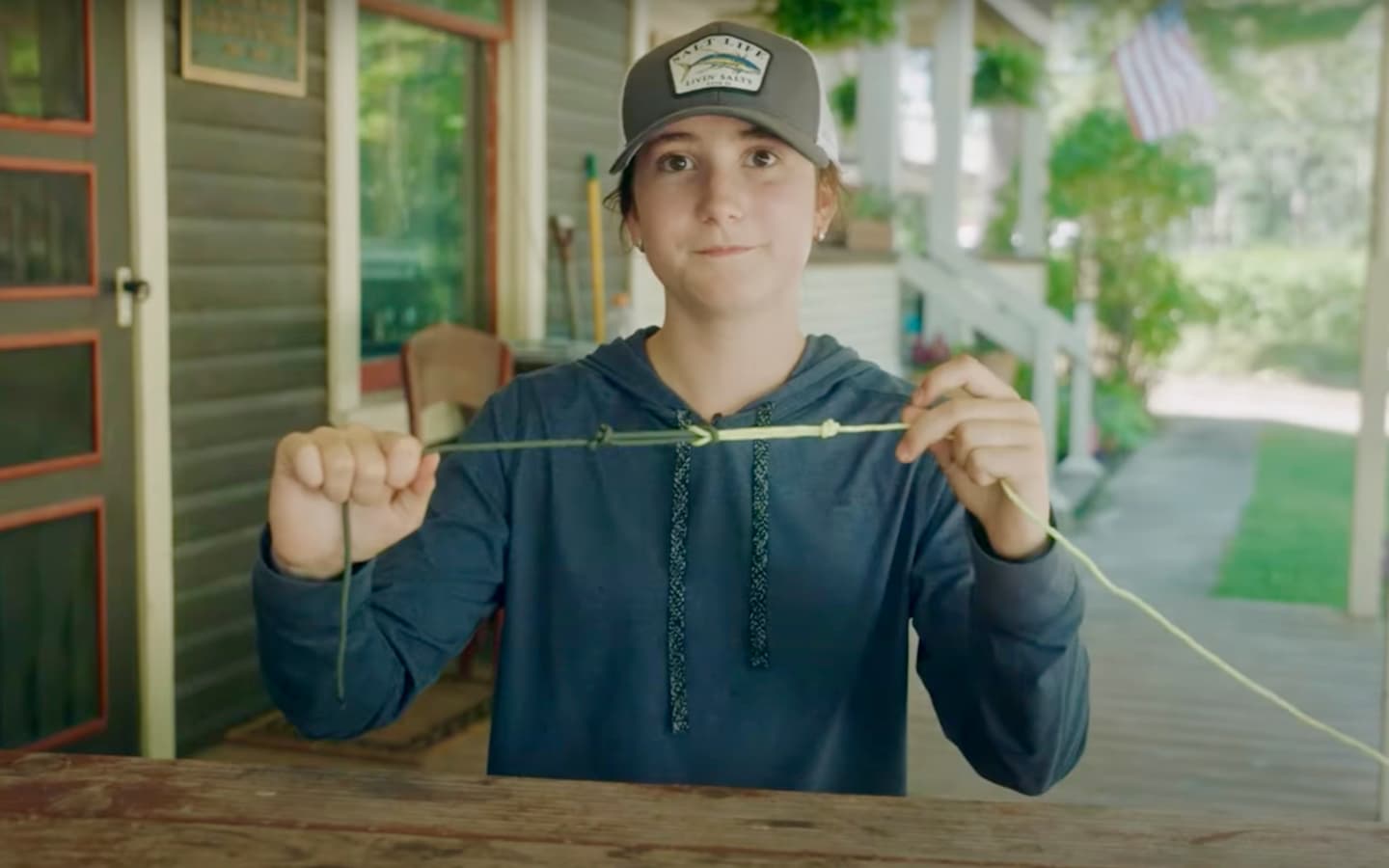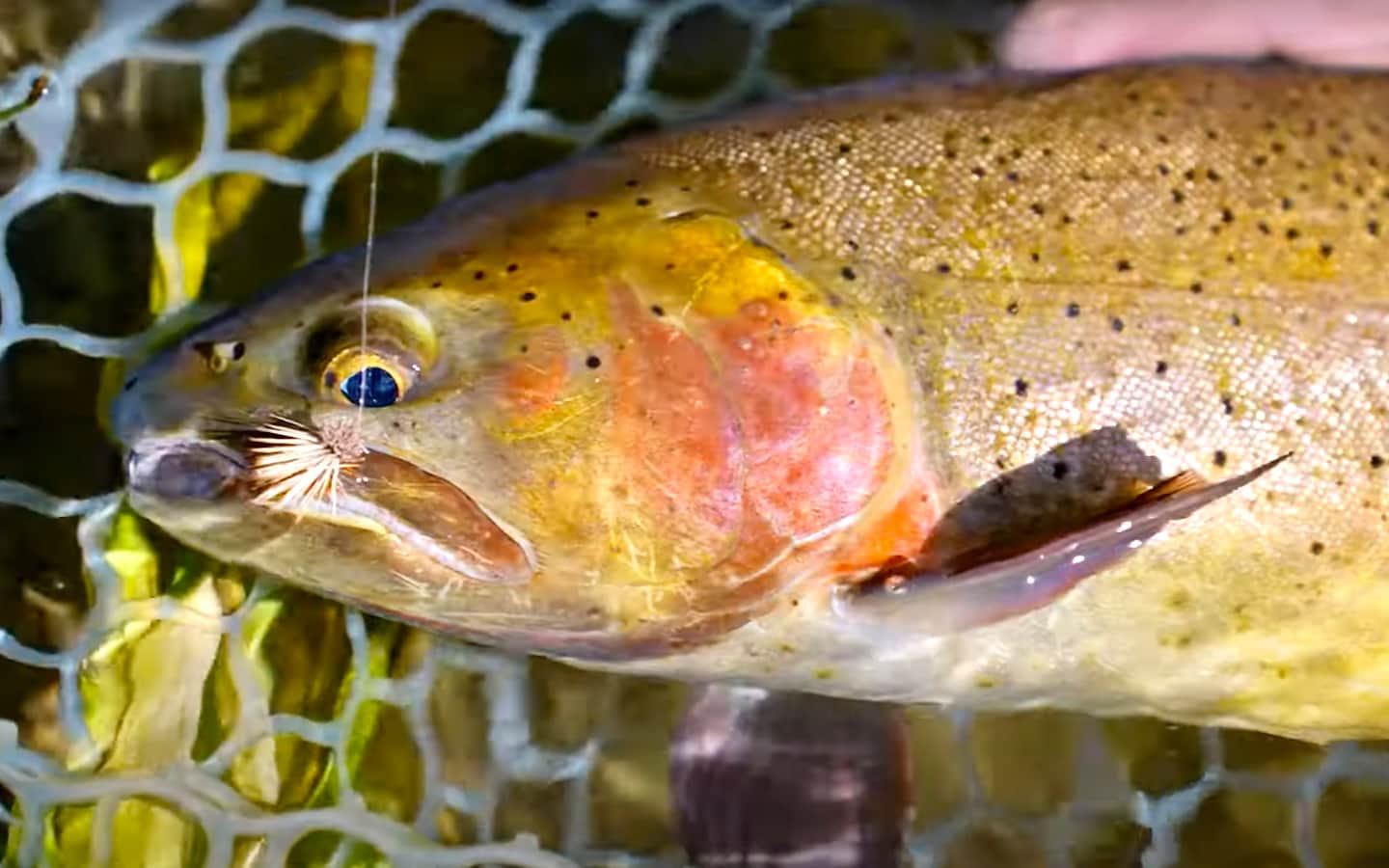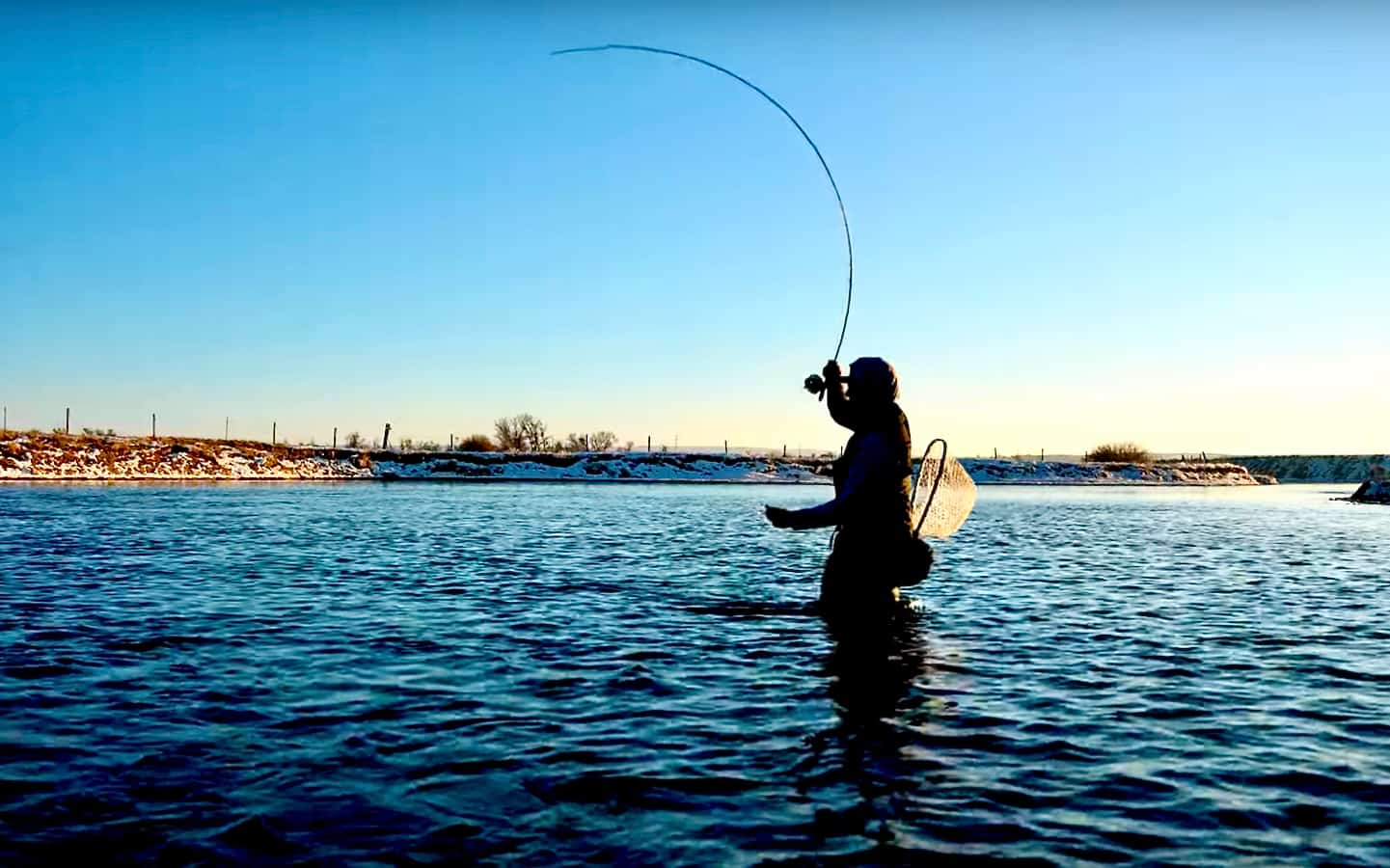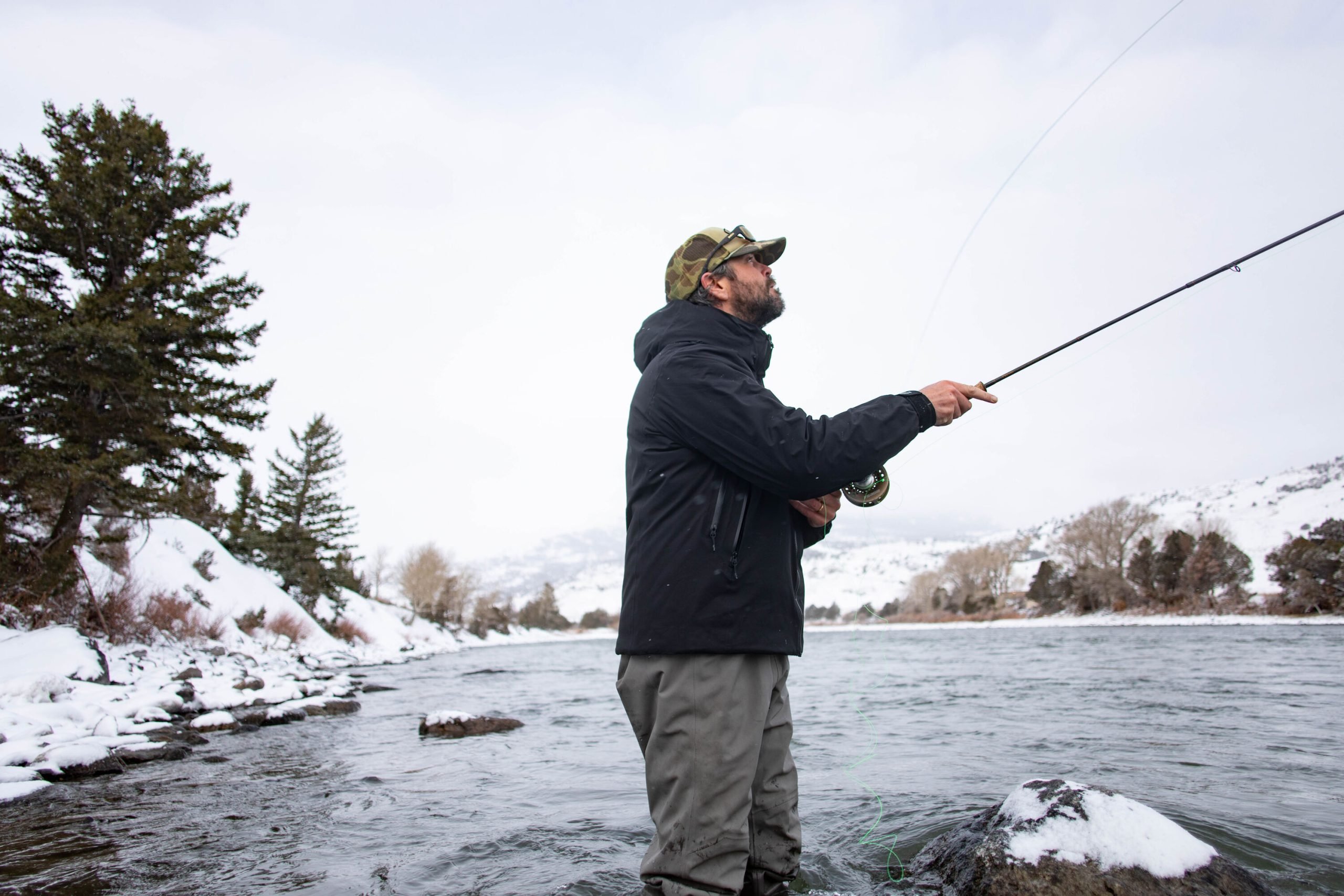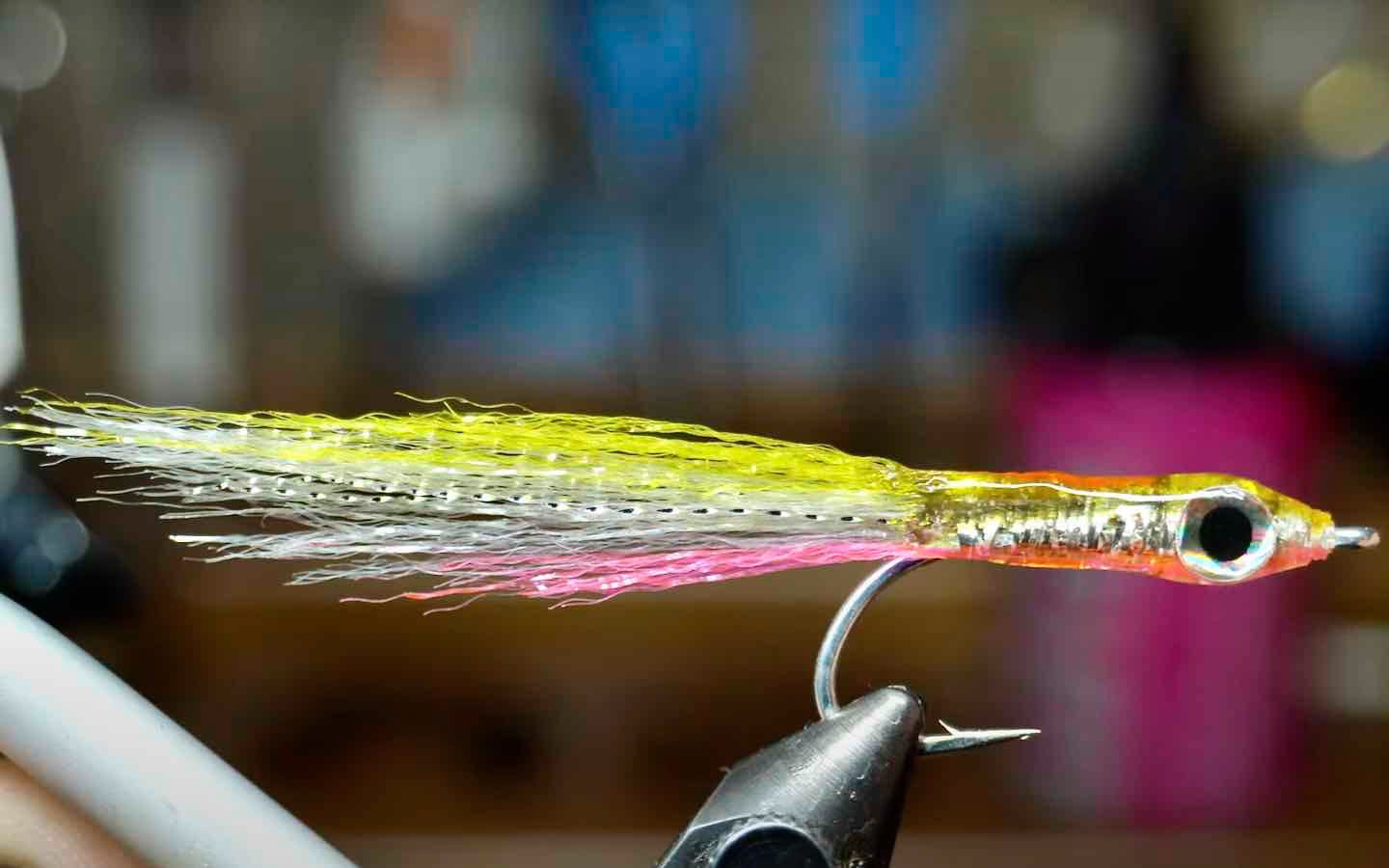Does How You Thread a Fly Eye Matter?
Have a question you want answered? Email it to us at [email protected].
Question: My fishing partner claims that you should always thread the tippet UP through the eye of the hook when tying on a fly. I suspect he’s full of it. Does it ever matter whether you thread the tippet up or down through the eye? Does it matter which knot you’re using?
Jeff M., Somerville, MA
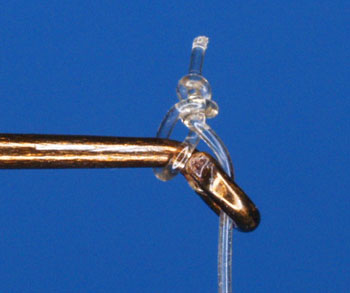
Down-Eye Hook: Improved Turle knot, leader inserted from bottom. Dick Talleur photo.
Answer: I had to laugh when I read this because it sparked a memory from when I was guiding in Montana in 1994. I was standing in the driveway of the lodge in Paradise Valley with fellow guide Geoff Unger when a client walked up and asked us which way to thread his tippet. I responded, “I always go up through the eye.” Geoff looked at me and said, “That’s funny. I always go down through the eye.” So I turned to the client and said, “Well, there’s your answer,” and he wandered away slightly befuddled.
Lo and behold, Jeff M. raises the question again. Although there are certainly knots—such as those that snug against the shank, rather than the eye—where it DOES matter which way you thread the tippet, for the clinch knot or any of the other common knots, I can’t see how the direction would make a difference. So I threw the question out to a host of experts and got lots of fascinating and (some) thoughtful responses:
Ted Leeson, author: I think your questioner is essentially correct—his partner is full of it. Barring a knot like the Turle Knot, which actually cinches around the shank, I don’t see that it makes a difference. Certainly not with loop-type knots. And knots like the clinch knot are basically symmetrical. But I gave it try, and indeed, it didn’t make a difference. You couldn’t tell by looking which direction the tippet had initially been threaded; I dropped a couple of dry flies, one knotted each way, into a dish of water, and they floated the same. I think most sensible people thread the tippet down through a turned-down-eye hook, and up through a turned-up-eye hook because these directions give the most open access to the hook eye. With ring-eye hooks, it’s equally easy either way. Possibly there are knots out there in which the tippet direction does make a difference in the behavior of the fly, but I don’t use them.
Paul Schullery, author and historian: As for which way to thread the hook, if I ever read or heard of this, it escaped me. It sounds like there is probably some arcane folklore running with this, but it escapes me too. Something to do with the way the knot is exposed depending upon which way you thread the hook, maybe? But that would be a matter of your hands’ positions, rather than an intrinsic difference in the leader or the hook.
As far as which knot, I couldn’t make a case for caring much, at least in the kind of fishing I do. I always use the same cheezy old double clinch knot. If I thought I was likely to be fishing for one of your glorious cover fish, maybe I’d reconsider, but probably not at this point. I’d just use a lot heavier tippet, if you could even call it that. I’ve always abstractly admired the Turle knot, though. My skilled steelhead-fishing friends use it all the time, and I really understand the rationale; it’s very convincing. Some day maybe I’ll regret never having taken knots seriously enough, but I can’t remember the last time I lost a fish because that crummy old clinch knot failed. I’m about as likely to break the hook or the fly line as to have the knot fail. I suppose I owe it all to the great monofilaments we have.
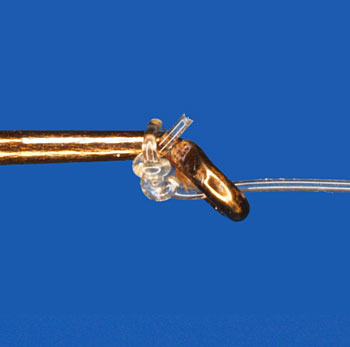
Brant Oswald, guide and fly-fishing instructor: The only time I think this would be a real issue is with a knot—like the Turle Knot—which is seated behind the eye. In this case, the tag needs to be inserted from the front–so down through the eye of a down-eye hook, and up the through the eye of an up eye hook. But up-eye hooks are pretty rare these days (remember Mustad 94842s?), except for the guys who like the traditional look for steelhead and Atlantic salmon patterns, and I doubt if they use any of the variations of a Turle anymore.
As someone who has been teaching beginning fly-fishing classes for a long time, this question is actually pretty common with beginners the first time they pick up a fly and a piece of monofilament. If the student is tying a clinch knot (I’m guessing the angler posing the question for the column is tying a clinch, as it is the most common freshwater fly-to-tippet knot), my standard answer is that it doesn’t matter, but it does result in half a turn difference in the number of wraps.
For a right-handed angler tying a clinch knot, wrapping away from his body: going down through the eye of a down-eye hook, the tag ends up on the near side of the standing end. If the same knot tier comes up through the eye of a down-eye hook, the tag ends up on the far side of the standing end. If one finishes the knot in the same direction in either scenario, the wrap count is different. So maybe we should ask if the knot tier is right-handed or left handed, wrapping away from his body or toward it, standing upright or standing on his head, in the northern or southern hemisphere, etc., etc.
As an instructor, I am a lot more concerned about students forming the knot correctly, drawing it up completely, and testing it. My experience as a guide tells me the biggest reason for knot failure among trout anglers is knots that are not tightened completely.
What do I do personally? For most trout flies, I use a standard (not an “improved”) clinch knot and pass the tippet through the eye from front to back (so down on a down eye hook). In situations where I need to use coarse, stiff tippet (fishing large, weighted streamers on heavy tippet, bonefishing or permit fishing with heavier tippets), I use a 4 to 5 turn Uni-Knot and leave the loop slightly open to give the fly some freedom of movement.
Dave Klausmeyer, editor, Fly Tyer: That’s crap. Unless it’s for some reason I don’t understand (and I’m okay with that), the actual leader to line does not come off the hook eye; it comes out of the end (edge?) of the knot. The knot segregates the running tippet from the hook eye, right? So what’s the big poop?
I use a regular clinch knot for everything: trout, landlocked salmon, Atlantic salmon, saltwater, bass, whatever. No need to turn this stuff into alchemy, except that it gives people like us something to write about.
Dave Kumlien, guide and head of the Whirling Disease Foundation: Wow! One of the great questions of life. Up or down through the eye? I honestly don’t pay attention. I think that most of the time, I start the tippet down through the eye, and I don’t know that I could tell you if there’s a difference in the way the fly lands or floats. One thing I do believe in, and that is how drag on the fly impacts trout behavior. Most of the stuff they eat rides on the current, and I believe that the unnatural movement of the fly in relation to the current that results from drag causes more rejections and refusals than anything else. As a result, I’ve come to attach most all of my flies with a loop which allows the fly to move more freely and definitely produces longer, drag free floats.
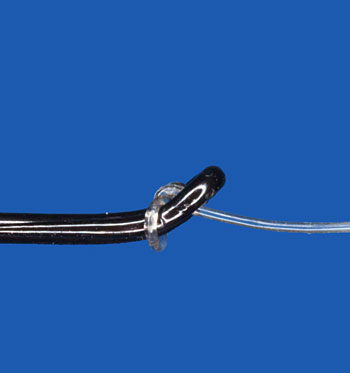
Macauley Lord, casting instructor and author:
What I know: Up vs. down through the eye makes no difference. If your friend owns a bathtub, he should test this for himself.
Why: Take a fly that you would like to have ride either hook-point-up or hook-point-down. Tie it on with the tippet going up through the eye. Put it in the tub and observe how it rides. Now tie it on with the tippet going down through the eye and you will see that youcannot change the orientation of the hook point by changing the direction in which you thread the eye.
My knot: I use a Uni-Knot, but have also tank-tested this question with an improved clinch.
If, however, your friend—and may he move on to more important concerns—decides to become a dropshotter (see under bass fishing), he would use a Palomar Knot. When you pull on the long tag end and the standing end of a Palomar simultaneously [really, look up dropshotting], you’ll see that, in that case, it does it matter whether you thread up or down through the eye. (Dropshotters like their hooks riding point-up.)
Sigh. Tell your friend that he should question most fishing wisdom he was taught by Uncle Bob or by Mr. or Ms. Famous. There is still a fair amount of folk wisdom hanging around our sport that, I think, impedes the direct simplicity of its joys. I was taught to speak very quietly around fish by my long-gone fishing mentor, Ed. I sometimes think of him when I’m laughing out loud, while fighting a fish.
Dick Talleur, author, fly tier: My take on this is that one needs to consider shape of the hook eye and the type of knot. On straight, or relatively straight eyes, I can’t see where it makes any difference whatever, as the knots commonly used on them, such as the improved clinch, form in front of the eye.
On down-eye hooks and up-eye hooks, there’s the matter of the Turle knot. Properly tied, this knot, and variations of it, when properly tied, actually form around the “neck” of the hook behind the eye, and the leader passes straight through the eye.
If the leader is inserted through the bottom of a down-eye, the Turle will form around the top of the hook, and the leader will pass through the eye at a sharp downward angle. Not at all what one would want. When the leader is inserted downward from the top of a down-eye, the Turle will form around the bottom of the hook, and the leader will pass straight through the eye, as it should.
In the case of up-eye hooks, just the opposite is true. Please refer to the attached photos. I hope your readers find this helpful.
Brian Grossenbacher, guide and photographer: I don’t know that I notice which direction I thread the eye, but I pay particular attention to the knot that I use. I use fluorocarbon tippet which is a bit stiffer than traditional monofilament so to offset that stiffness, I use a no-slip knot to the fly.
Zach Matthews, editor of The Itinerant Angler Web site: For standard knots like a clinch knot or a non-slip mono loop or a Duncan’s (sliding) loop, nothing in the knot architecture is going to make the fly ride either nose-up or nose-down regardless of whether you start the knot by going up or down. By the time you’ve tied the knot, your fly can slide anywhere in at least a 270-degree arc along the tippet passing through the eye of the hook. In fact, the only direction the fly can’t really go is directly back up the fly line.
If you feel your knots are off-kilter, either snug them tighter (for say a clinch knot) and set the fly where you want it, or use a loop knot like the non-slip mono loop, and let the fly dangle naturally. I use loop knots more and more these days; the only exceptions are tiny nymphs and dries, for which I use the equally tiny Davy Knot.
Henry Cowen, striper guide and contract tier: I normally thread my tippet thru the hook eye from the bottom up. The reason for this is simple: because I just do! Makes no difference to me or the fish. And the fish have told me that too.
Bruce Olson, Umpqua Feather Merchants: No clue at all. Seems sort of like, what’s the best way to put a new roll of toilet paper on the spindle.
Tom Rosenbauer, author and Marketing Director for Orvis Rod & Tackle: Other than the Turle Knot and another knot that a steelhead guide friend of mine uses (which I never use and can’t remember the name), I don’t know of any knots where it matters. I usually thread through whichever end seems less clogged with head cement and material. (I tie all my own so no one to blame but myself.)
Frank Smethurst, guide and star of film and television: I think that positioning the knot relative to the hooks eye is usually unimportant unless you are tying some sort of snell or riffling hitch type of knot. I do share the view with his fishing partner that the type of knot, and a detailed look at that part of the connection is hugely important to overall success. Whether to tie up or down through the hook eye doesn’t much pertain to the loop knots that I usually use.
Ben Romans, writer and former editor at Fly Fisherman: I’m curious to know the reasons behind your friend’s theory, because in all honesty, I can’t recall a single experience on the water where I thought to myself, “Crap, I bet I would have caught that fish if I had threaded my fly from the bottom instead of the top.”
I’d be more concerned with the strength of the knots you’re using than how you’re threading the hook eye. Most of the time I use an improved clinch or Eugene bend knot for dries and small nymphs, and a non-slip mono loop for streamers and large, heavily weighted nymphs. I like these knots because they are easy to remember and maintain a high strength ratio when tied correctly. Just don’t skip a step and remember to cinch them correctly or they’re useless—no matter which approach you take through the hook eye.
The only other thing I would add is that between casting, mending, and the influence of the water, a leader and tippet twists, curves, and stretches six-ways from Sunday. It’s insane to think your fly lands the same way two times in a row because you threaded up, rather than down, through the hook eye.
Dan “Rooster” Leavens, guide and owner of the Stonefly Inn: The physics of the issue don’t lend themselves to one certain conclusion. Given that there are too many variables with regards to the fly (size, materials, hook, composition, etc.), the fly will ride as it wants in the water column. Most knots achieve a center pulling point, and the fly does the rest. I think the buddy is full of it.
E. Donnell Thomas, author: I don’t think it matters, and I’m too busy thinking about fish to worry about it, so I can’t even tell you how I do it. At the streamside, there are more pressing matters to attend to!
Dave Skok, guide and photographer: I’m not a physicist, hydrologist, or mechanical engineer but I don’t think it makes any difference for most knots. It does alter what side of the eye the tag end protrudes from which might make a difference in certain applications, though. I’m sure it must matter on specialty knots like the riffling hitch, too.

